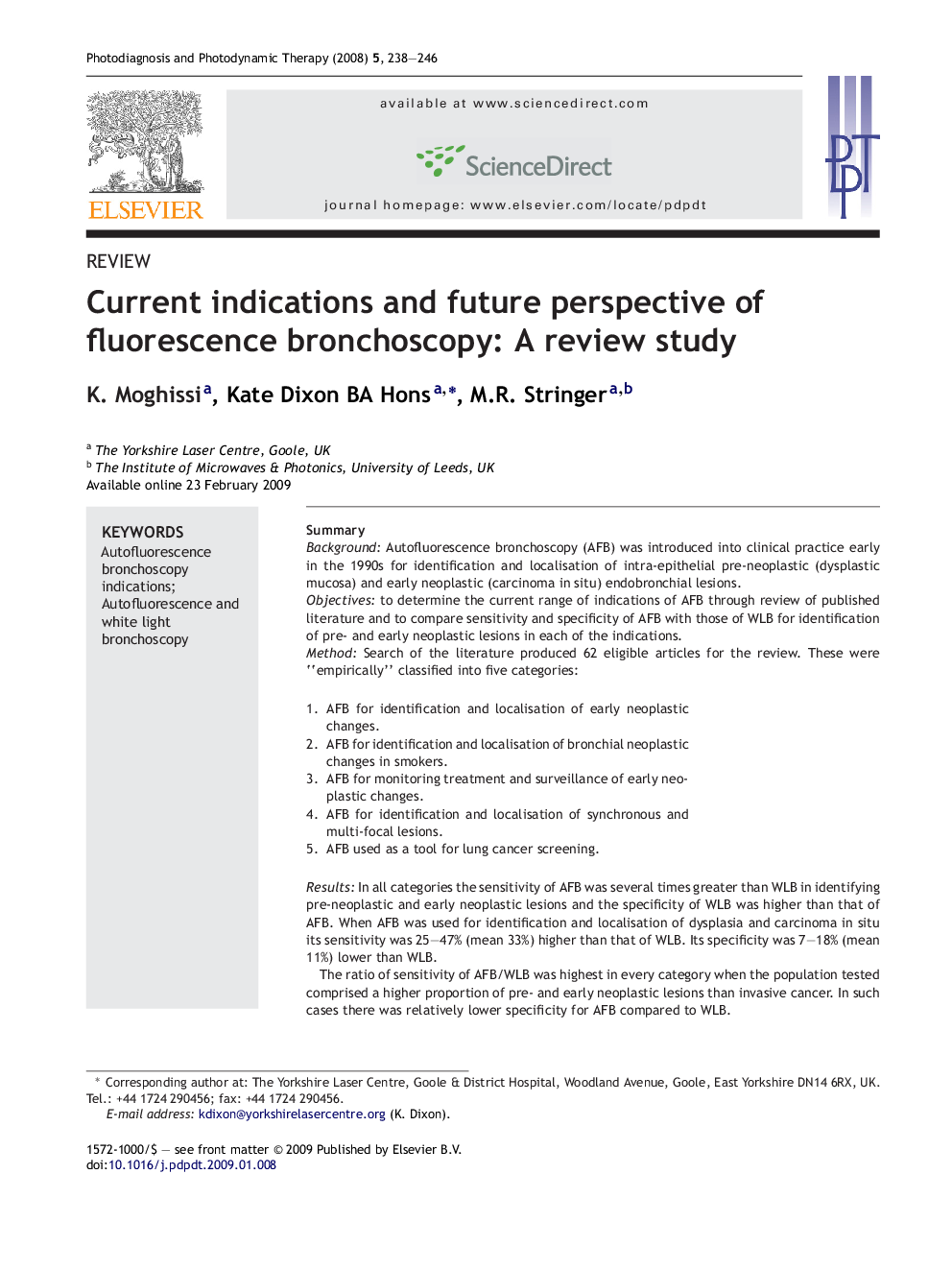| کد مقاله | کد نشریه | سال انتشار | مقاله انگلیسی | نسخه تمام متن |
|---|---|---|---|---|
| 3821023 | 1246528 | 2008 | 9 صفحه PDF | دانلود رایگان |

SummaryBackgroundAutofluorescence bronchoscopy (AFB) was introduced into clinical practice early in the 1990s for identification and localisation of intra-epithelial pre-neoplastic (dysplastic mucosa) and early neoplastic (carcinoma in situ) endobronchial lesions.Objectivesto determine the current range of indications of AFB through review of published literature and to compare sensitivity and specificity of AFB with those of WLB for identification of pre- and early neoplastic lesions in each of the indications.MethodSearch of the literature produced 62 eligible articles for the review. These were “empirically” classified into five categories:1.AFB for identification and localisation of early neoplastic changes.2.AFB for identification and localisation of bronchial neoplastic changes in smokers.3.AFB for monitoring treatment and surveillance of early neoplastic changes.4.AFB for identification and localisation of synchronous and multi-focal lesions.5.AFB used as a tool for lung cancer screening.ResultsIn all categories the sensitivity of AFB was several times greater than WLB in identifying pre-neoplastic and early neoplastic lesions and the specificity of WLB was higher than that of AFB. When AFB was used for identification and localisation of dysplasia and carcinoma in situ its sensitivity was 25–47% (mean 33%) higher than that of WLB. Its specificity was 7–18% (mean 11%) lower than WLB.The ratio of sensitivity of AFB/WLB was highest in every category when the population tested comprised a higher proportion of pre- and early neoplastic lesions than invasive cancer. In such cases there was relatively lower specificity for AFB compared to WLB.ConclusionThe review suggests that AFB should be included in routine investigations of patients suspected of having lung cancer, those undergoing lung cancer surgery and in post-treatment follow-up to discover early cancer and/or recurrence. Also, it has to be included in any screening programme protocol.
Journal: Photodiagnosis and Photodynamic Therapy - Volume 5, Issue 4, December 2008, Pages 238–246